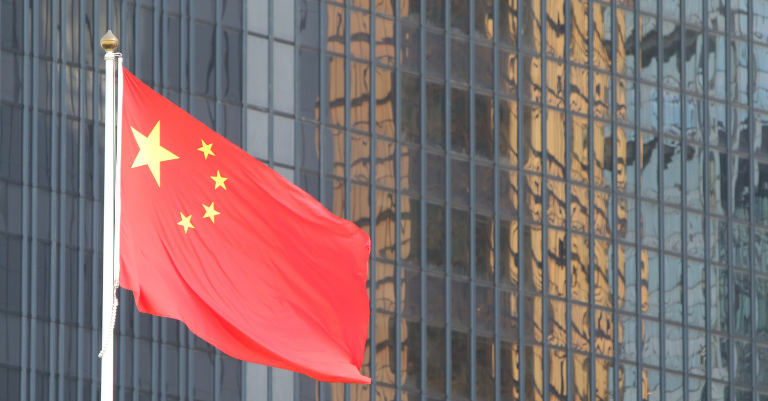Following promulgation of the 14th Five-Year Plan for IP Protection by the Chinese State Council in October 2021, the China National Intellectual Property Administration (CNIPA) recently released specific work plans to implement the aforementioned 14th Five-Year Plan for patent and trade mark examinations. The CNIPA plan states in particular the focus on transition from quantity to quality in intellectual properties, and thus the need to both accelerate patent and trade mark examinations, and to improve quality of applications.
On the patent side, the CNIPA provided some predictive indicators in 2025 regarding time durations for the examinations as follows:
| Items | Factual Values in 2020 | Predicted Values in 2025 |
| Time Required for Examination of Invention Patent Applications Since Examination Started | 20 months | 15 months |
| Time Required for Decisions in Invalidation Proceedings Since Case Initialization | 6 months | 6 months |
| User Satisfaction Index of Patent Examination Quality | 85.4 | 85 or above |
| Accuracy of Invention Patent Examination | 92.2% | 95% |
In comparison to the predicted time required for patent examination above, the average examination duration for standard cases at the EPO was 23.2 months at the end of Q1 2021 (source: EPO Quality Report 2020). On the USPTO side, the agency is now issuing final decisions — either allowing a patent or issuing a final rejection — on average within 23.3 months (source: USPTO year in review). As such, it is expected that during China’s new five-year plan, search and examination results from the CNIPA could provide applicants filing worldwide patent applications an early indication of their chance of success, and may serve as a basis for various patent prosecution highway schemes.
Other important targets mentioned in the plan include:
- Improving examination standards on new technologies like big data, artificial intelligence and genetic technology
- Setting different examination guidelines according to technology areas
- Completely removing patent subsidies at various governmental levels
- Conducting dynamic patent quality inspection and cleaning abnormal patent applications.
On the trade mark side, CNIPA's predictive indicators in terms of examination for 2025 compared to those for 2020 are as follows:
| Items | Factual Values in 2020 | Predicted Values in 2025 |
| Time Required for Examination of General TM Registration Requests | 8 months | 7 months |
| Time Required for Examination of TM Assignment | 2 months | 1 month |
| Time Required for Examination of TM Amendment or Renewal | 1 month | 15 days |
| Time Required for Examination of TM Opposition | 14 months | 10 months |
| Time Required for Examination of TM Review of Refusal | 6 months | 5.5 months |
| Time Required for Examination of TM Invalidation Petition | 10 months | 10 months |
| Quality pass rate of substantive examination of TM registration | 95% | 97% |
As a matter of fact, the examination duration for most types of trade mark cases in China is already not long compared to many other jurisdictions. In practice, on the contrary, many applicants would like to see the CNIPA slow down its processing of some cases, in particular, the review requests of trade mark refusals, and to await the outcome of ancillary actions filed by the applicants against the cited earlier marks (such as non-use cancellation actions, oppositions and invalidation petitions). CNIPA's current practice is generally not to await the outcome of any ancillary actions, which has resulted, in part, in the extremely low success rate of trade mark review of refusal cases in China (only about 30%) and in a large number of repeatedly filed applications for trade mark registration.
Other important goals mentioned in the plan with respect to trade mark examination include, but are not limited to:
- Broadening the channels for raising questions about the quality of trade mark examination and expediting the processing of reports or complaints
- Strengthening the coordination and alignment of the examination of trade mark applications with other procedures, such as oppositions, adjudication cases (e.g., review of refusals, invalidation petitions, etc.)
- Establishing a fast approval mechanism for collective trade marks and certification trade marks
- Curbing malicious trade mark applications and issue statistical reports in this respect every quarter.
Conclusion
Most of these targets have already been proposed, and are in line with China’s plans to develop the country into the world's technology leader in the 21st Century. The Chinese government should develop more concrete implementation measures to achieve these goals. One initiative already in place is the issuance by the CNIPA on 27 January 2022 of the "Regulations on Credit Management of Intellectual Property", which classifies six types of acts, such as irregular patent applications not aimed at protecting innovation and malicious trade mark applications, as acts of breach of credibility, and the parties involved will be listed and punished for serious violations.



